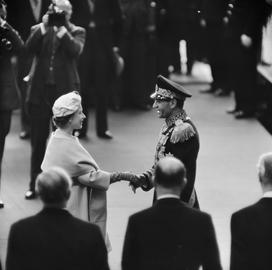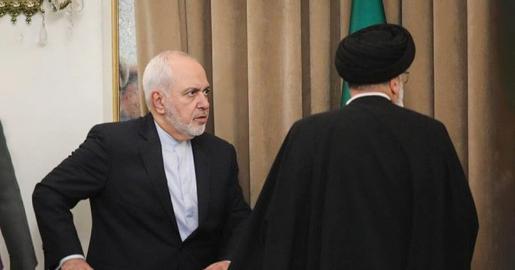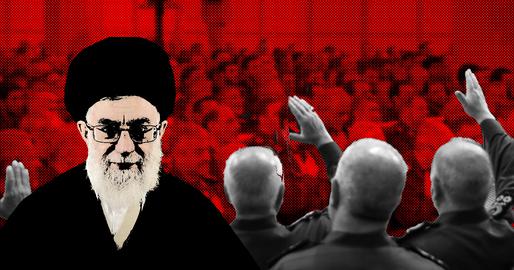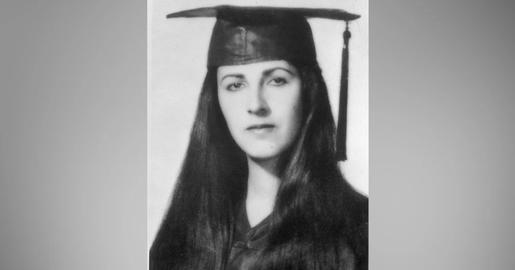With the death of Queen Elizabeth II, the longest-reigning British monarch of all time, a great chapter in British history has been closed – and to a lesser extent, of British-Iranian relations too.
At the time Elizabeth Alexandra Mary Windsor was born in London on April 21, 1926, Iran was ruled by Reza Shah Pahlavi. By the time she died at Balmoral Castle in Scotland Thursday after 70 years on the throne, Iran had been ruled by Ali Khamenei for 32 years.
A Fragile Start
When Queen Elizabeth ascended the throne on February 6, 1952, the most notable recent development in Iran-UK relations was that Prime Minister Mohammad Mosaddegh had nationalized Iranian oil industry the year before. This had brought back memories of the British occupation of southern Iran during WWII and the dethronement of Reza Shah by the allies in September 1941.
Iran’s oil industry had been controlled by the Anglo-Persian Oil Company since the early 20th century and Britain petitioned against its nationalization to the International Court of Justice in the Hague. The court’s verdict was announced on July 22, 1952 and, to the surprise of observers, judges rejected Britain’s complaint and voted in favor of Iran.
Among the 15 judges present was a Briton, Sir Arnold Duncan McNair. Remarkably even he voted in favor of Iran. It was the first time in the history of the post-war court that a judge had decided against his own government.
When the Iranian diplomat Jalal Abdoh thanked him for his vote in spite of his nationality, saying “the impartiality of this British judge has impressed the people of our country”, McNair pointedly replied: “Thank the government that allows a judge who is its subject to vote against the interests of that government without being admonished.”
A year later, a seismic development took place that is still fresh in the minds of Iranians today: the bloody coup d’état of August 19, 1953 against Mosaddegh, engineered by the British and the US.
The First Visit by the Shah: Marshal of the Royal Air Force
In 1959, when the explosive atmosphere in the wake of the 1953 coup d’état had calmed, Mohammad Reza Shah Pahlavi departed for a visit to Britain as the guest of Queen Elizabeth II. This was the first time the two heads of state were to meet. On May 5, 1959, the Iranian king and his queen flew from Geneva to London’s Gatwick Airport and were officially welcomed by the British monarch.
Queen Elizabeth hosted a banquet in honor of the Shah at Buckingham Palace and gave him the honorary rank of the Marshal of the Royal Air Force in a ceremony. “The cordial relation that now exist between Iran and your country have never been based on stronger foundations,” the Shah told her.
“I am confident that the goodwill, friendship and ever-expanding cooperation that now exists between the two countries not only secures and enhances the welfare and happiness of the people of both, but also helps stability and peace in the Middle East and across the world.”
The Shah’s official visit to Britain lasted until May 13, 1959. During this time, he visited the British nuclear research center and the Royal Air Force base at East Moor. He also held talks with Prime Minister Harold Macmillan and delivered a speech to the House of Commons.
The Iranian Court’s Historical Suspicions
Relations between Iran and Britain at this time were, in general, friendly. But the Iranian court had its suspicions. Three years later, the Shah visited Britain again and Ardeshir Zahedi, who was Iran’s ambassador to London at the time, later revealed these suspicions in his book.
“A member of the Confederation [of Iranian students] told me about this visit,” Zahedi would go on to write. “As preparations were being made for His Majesty’s visit to London, agents of the London police – and probably of the British intelligence service – visited a few members of the confederation and apparently, they warned them that if they wanted to hold demonstrations against the Shah they would have to make sure the Shah would not be harmed. Well, the only thing that we can conclude from this so-called warning is that first, this British source was revealing this trip, which was still confidential, to the students, and second, they were informing them that British officials did not mind if students held demonstrations against the Shah. Of course, we were not intimidated by such things. But such incitements go to show that all of those who claimed friendship and still do would not stop and have not stopped at any action behind the scenes that serves their interests.”
Ardeshir Zahedi was the son of General Fazlollah Zahedi, who was appointed prime minister with the support of Britain after the 1953 coup d’état and the downfall of Mosaddegh. But, for whatever reason, Iran’s royal family, including Ardeshir Zahedi who was Shah’s son-in-law, did not view Britain favorably although they had great respect for the British royal family. Queen Elizabeth’s visit to Iran in 1961 and the exceptional reception that she received clearly showed the deep respect of the two royal families for each other.
Queen Elizabeth II’s visit to Iran
On February 25, 1961, Queen Elizabeth landed at Tehran’s Mehrabad Airport to start a 10-day official visit to Iran in response to the Shah’s visit to Britain two years earlier.
The Iranians paid attention to every detail to make this visit perfect. When the queen was in the city of Isfahan, she and the Shah were scheduled to have lunch at Chehel Sotoun (“Forty Columns”), a 17th-century royal palace and a UNESCO World Heritage site. In his memoirs, Abdolreza Houshang Mahdavi, an Iranian diplomat and member of the entourage, wrote that they had constructed a special, “clean” flush toilet in a corner of the building’s garden exclusively for Queen Elizabeth and her husband.
For the first time during the reign of Mohammad Reza Shah, Tehran’s Golestan Palace hosted foreign visitors, meaning Queen Elizabeth II and her husband Prince Philip who again visited Iran later to attend the 2500-year celebration of the Persian Empire in 1971.
The Scheduled Visit that Was Derailed by the 1979 Revolution
This was the first and last visit of Queen Elizabeth II to Iran although Mohammad Reza Shah Pahlavi paid a few more unofficial visits to Britain. According to Empress Farah, Queen Elizabeth gave them sumptuous receptions at Windsor Castle even though the visits were not official: “Throughout the three days that we were at Windsor Castle, their hospitality was truly warm. The visit was not official but they held a sumptuous banquet and, with the guests that they had invited, it really felt like an official reception. I remember that His Majesty even went horseback riding with Queen Elizabeth because he liked it as much as the queen.”
The chance to visit Iran for a second time was denied to Queen Elizabeth by the 1979 revolution. Less than 30 years into her reign, the queen was scheduled to travel to the Persian Gulf aboard the Royal Yacht Britannia and, after visiting Oman, land at Bandar Abbas in southern Iran. The territorial integrity of Oman and the reign of its king Sultan Qaboos had been saved by the military intervention of the Shah, backed by Britain, during the Dhofar Rebellion and Britain was thankful for Iran’s role in the fight against pro-Soviet, leftist rebels.
Sincerely Yours, Queen Elizabeth II
According to Empress Farah, after the revolution and sometime after the visit to Iran was cancelled, Queen Elizabeth wrote a letter to Shah, who had now left Iran and was in Aswan in Egypt: “The letter was delivered to His Majesty through the British embassy. In this letter, the Queen expressed her and the Prince’s sorrow and wrote that ‘in these moments we are thinking a lot about you and the empress and we hope to see you soon.’ The letter was signed off with the words ‘Yours Sincerely’.”
Despite this, Britain once again stabbed at the heart of Iran’s royal family and did not allow the Shah or his family to travel to Britain after the revolution because it was afraid for its diplomats in Tehran. The Shah owned properties in Britain and could have stayed in any one of them while in Britain but, perhaps, the refusal to allow him into the country brought back memories of his father’s forced abdication in 1941 and his exile first to Mauritius island in the Indian Ocean and then South Africa.
Until the end of her life, Queen Elizabeth II continued to communicate with Iran’s royal family. Of course, in the past 40 years, she also had to receive ambassadors of the Islamic Republic at Buckingham palace.
There are no public records of communications between Queen Elizabeth II and Iran’s royal family for the past 40 years, the period Iran was ruled first by Ayatollah Khomeini and the Ali Khamenei.
The only time after the revolution that the British royal family officially corresponded with the government of the Islamic Republic was in February 2004. Prince Charles, now King Charles III, visited Iran, met with President Mohammad Khatami and visited quake survivors in Bam. In 2020 he said that he would like to make an official visit to Iran, calling it "such an important part of the world”.

























comments